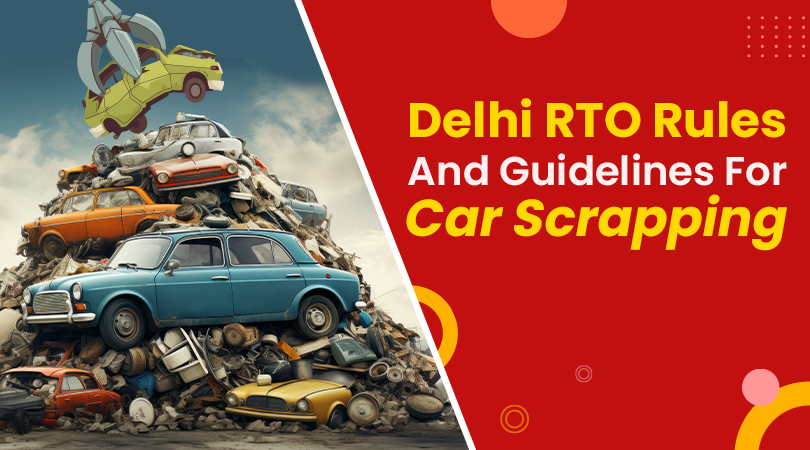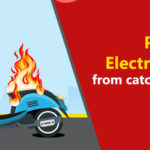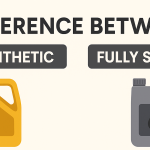The Indian Government’s Vehicle Scrappage Policy has been initiated to get rid of old and damaged vehicles from the road and recycle them to make new and modern ones. The policy mainly aims to phase out damaged and unfit vehicles to reduce the country’s carbon footprint. Heavy commercial vehicles, other commercial vehicles, and private vehicles will have to be tested at Automated Testing Solutions (ATSs). Commercial vehicles that are more than 15 years old and private vehicles that are more than 20 years of age are declared unfit by Automated Testing Solutions. These unfit vehicles are called End-of-Life (ELV) and are required to be scrapped.
Delhi RTO rules and guidelines for vehicle scrapping:
- The owner first needs to write a letter and send it to the concerned RTO so as to notify them about scrapping the car.
- Then the owner must submit an affidavit to prove that the said vehicle does not have a bank loan, insurance claims, traffic challans, pending court cases, or thefts.
- The owner needs to submit the original documents of the car and the VIN plate will be cut out after car scrapping.
- The RTO will demand a confirmation document stating the full address of the scrap facility place with valid pictures of the vehicle.
Steps for getting your old vehicles deregistered:
- The owner of the vehicle needs to inform the concerned RTO about scrapping it.
- The owner needs to submit the Registration Certificate along with the chassis number plate of the scrap vehicle.
- The next step is submitting an affidavit claiming the said vehicle is not under any pending court cases, loans, or insurance claims. Along with the affidavit, a deregistration application has to be sent.
- The RTO officials will then verify all these documents submitted by the scrapped car owner and request diligence reports from the National Crime Records Bureau and the traffic police.
- The RTO officials will complete the deregistration process only if the submitted documents are found satisfactory.
What are the steps of car scrapping?
The car scrapping process involves various steps, these are:
-
Dismantling of the vehicle:
When you visit a local scrap yard, first, they will dismantle the vehicle. The professionals will carefully remove all the car’s components, such as the engine, transmission, tires, and all the other parts that are deemed useful to them. The dismantled parts will be taken for recycling or resale.
-
The hazardous materials are removed safely:
Older vehicles are often composed of hazardous materials, such as lead-acid batteries, coolant fluids, or motor oils. If these parts are disposed of inappropriately, it can prove to be risky for both human beings and the environment. Hence, it’s important to contact a registered scrap dealer for ensure safe dismantling and disposal of these materials of your old vehicle.
-
Recycling of the usable materials:
After the dismantling process, the usable parts are sent for recycling. The car’s body is usually made of quality metals such as steel or aluminum, which can be reused to design other products. On the other hand, non-recyclable materials are carefully disposed of by following the proper waste management protocols.
-
A shredding certificate is issued:
Lastly, after completing the dismantling process, your scrap dealer will get you a legal shredding certificate stating that the vehicle was disposed of by following the proper rules and regulations of the state RTO. This is an important document which enables your state RTO to update the records of your car scrapping. Also, the shredding certificate is essential to formally apply for the deregistration of the vehicle.
What are the benefits of car scrapping?
The process of car scrapping comes with several environmental benefits, such as:
-
Pollution control:
Car scrapping is beneficial for the ecology. Older cars and motorcycles generate more harmful pollutants, which lead to an increase in air pollution. Therefore, when owners scrap their older cars and replace them with new ones, there is a significant reduction in air pollution. Hence, car scrapping largely improves air quality, especially in a state like Delhi.
-
Recycling of resources:
During car scrapping, usable parts of old and damaged cars are recycled to make new, usable machines or gadgets. This is a great way of ensuring the conservation of valuable resources. Car scrapping also largely reduces energy consumption, which occurs when new parts are manufactured from scratch.
Wrapping Up:
It is important to follow these steps mentioned above to get your end-of-life car scrapped legally and responsibly, as per the rules and regulations of Delhi RTO. By doing so, you can do your bid to protect the environment and reduce pollution in Delhi. In addition to environmental benefits, car scrapping also ensures the cleanliness and sustainability of Delhi’s roads.




































